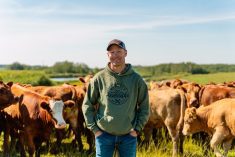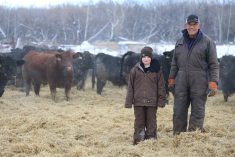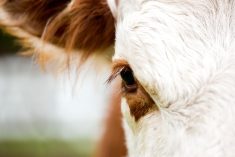Cattlemen and women gathered today at the 2014 Cattle Industry Convention and National Cattlemen’s Beef Association Trade Show in Nashville, Tenn. to hear CattleFax market analysts’ projections for the year ahead. Creighton University Professor Emeritus Art Douglas told the audience he expects improved moisture conditions in the majority of the United States, including improvements of the drought-affected areas of the west coast.
Read Also

A strategic approach to risk on the ranch
Given the increase in the value of livestock and the market volatility, we need to cover our risks. First,…
As precipitation returns back to more normal levels for the 2014 growing season, CattleFax predicts farmers in the U.S. should grow an adequate corn crop to build the carry over supply. The improved corn supplies should assure lower corn/input costs over the next 12-24 months, according to CattleFax Grain Market Analyst Mike Murphy.
“The lower input cost will have a direct correlation to improved feeder cattle and calf values in 2014 and with continued help from Mother Nature, we will be in better shape with regard to hay supply and prices moving forward,” Murphy said.
Global Market Specialist Brett Stuart indicated that beef exports are expected to be near even in 2014 with record high prices being the limiting factor. At the same time, expectations are for beef imports to be near even, despite the need for 90 percent trim due to the expected lower non-fed slaughter rates in the U.S. The driving factor for stagnant imports is the growth of China demand for global beef which will continue to divert beef from Australia into the China market and away from the U.S. market.
CattleFax Senior Analyst Kevin Good indicated the combination of improved moisture conditions resulting in lower input costs and record high calf values should lead to beef cow herd expansion beginning in 2014.
Beef production in the U.S. will fall, with per-capita supply declining 4.5 percent. However, he said the pork and poultry supplies are expected to increase, leaving total meat supplies near even. CattleFax projects the Retail Beef Demand Index will improve by one percent due to continued modest economic growth.
“As we think about our consumers today, not only domestically but globally, they’re a lot more diverse than they have been in past,” Good said. “We’ve got different customers with different preferences and different pockets books.”
Good said because of the continued tighter feeder cattle supply, the margin segments of the beef production system, both feed yards and packers, will struggle with excess capacity. Look for continued closure of both packing and feeding entities over the next 12-24 months.
Prices are expected to average $135 compared to $126 during 2013, an increase of seven percent. Yearling prices are expected to average $168, an increase of 13 percent from the 2013 average of $146. According to Good, calf prices will average $193, up 13 percent from last year’s average of $168.
CattleFax CEO Randy Blach summarized the year ahead by saying almost all segments of the production chain will be profitable, although margin operators will continue to face challenges over the next few years.
Blach remains optimistic for the long-term cattle industry as the profit incentives will result in a larger U.S. cattle herd over the next five years, creating business opportunities for those willing to adapt to a dynamic and changing business environment.
Courtesy of the National Cattlemen’s Beef Association, U.S.















